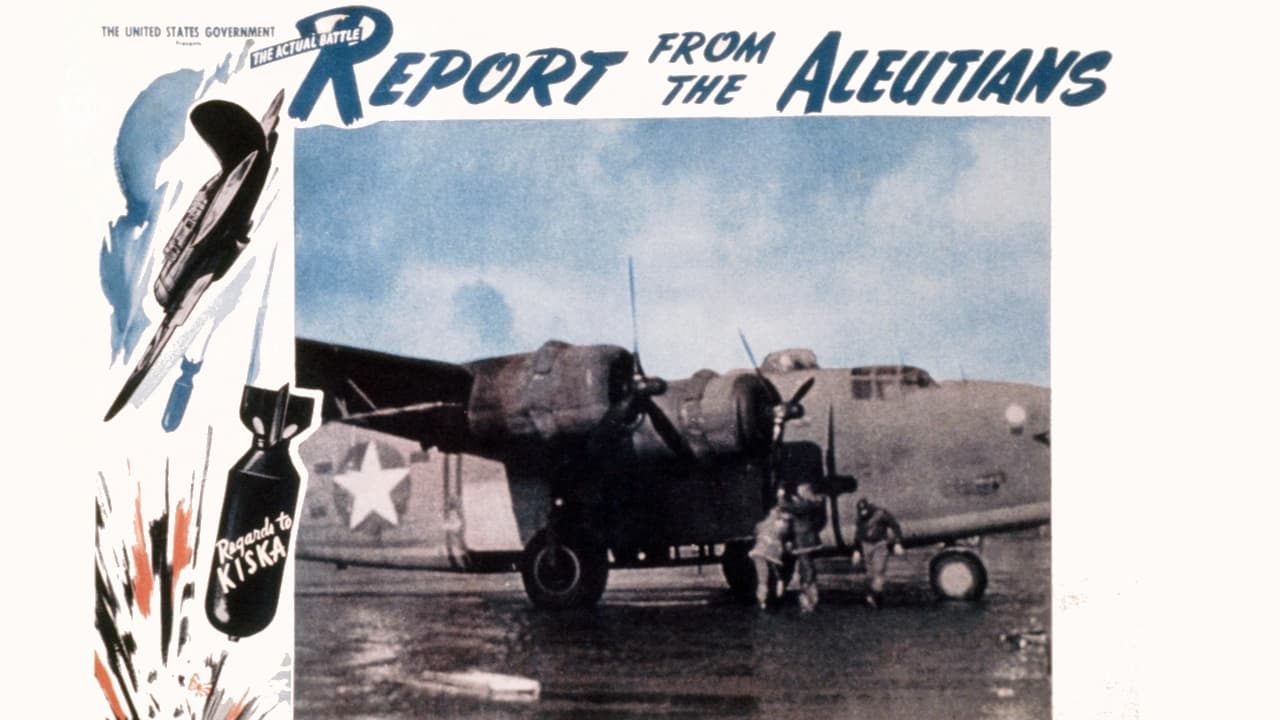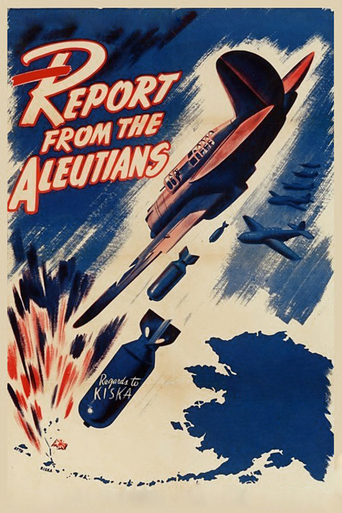

Mostly, the movie is committed to the value of a good time.
... View MoreThere are moments in this movie where the great movie it could've been peek out... They're fleeting, here, but they're worth savoring, and they happen often enough to make it worth your while.
... View MoreAn old-fashioned movie made with new-fashioned finesse.
... View MoreThe movie really just wants to entertain people.
... View More*Spoiler/plot- 1943, A documentary film of the work and challenges of getting supplies and soldiers to stop the Japanese expansion into the North American continent in the Alaskan Island chain.*Special Stars- Director: John Huston *Theme- Determination and planning will win battles.*Trivia/location/goofs- Color documentary. John Huston almost killed in bombing raid over an island. These island battles were often called: 'The Forgotten Battles'. Actor Charlton Heston was another veteran of these cold island operations.*Emotion- An enjoyable documentary made up of live action combat or newsreel footage. But it is extremely educational and does what a narrative simulated war film can do.
... View MoreIn recognizing Memorial Day, I decided to watch some wartime documentaries made by John Huston during World War II starting with this one which took place at the outpost of Adak concerning a bombing mission over Japan-occupied Kiska. Huston narrates with some additional voice overs by his father, Walter. Suitable mood music permeates most of the film which adds to the color footage's appeal. When the actual flying sequences are shown, one gets some sense of excitement though since dialogue is kept to a minimum and there are few explosions, it doesn't seem Hollywood-made to provide unbridled joy to victory. Worth seeing. Watched this on Internet Archive.
... View MoreReport from the Aleutians (1943)*** (out of 4) John Huston directed and narrates this Academy Award winning documentary that takes a look at the American troops who went up to protect Alaska during WWII so that it wouldn't be open to attack from the Japanese. Frank Capra, William Wyler, John Ford and many other legendary directors made these documentaries during WWII but of all I've seen (and I've seen most) it was Huston who really delivered something different. He made a handful of these documentaries and they were all quite different from others and I'd say that if you know his reputation then you'd understand why. Huston was always known for being a man's man as he loved to fight, drink, have a good time and live adventure. His documentaries were so different from the others because he seemed to focus in on things that the others wouldn't dare do. Apparently the U.S. government objected to some of the stuff he shot here but the director stood by his guns and these scenes are actually the most entertaining in the movie. These scenes involved showing what the soldiers were doing when not on actual duty. This includes them shaving, cleaning their pots and pans and just wrestling around in front of the camera. It's really these scenes here that give you a great idea of what it was like out in the field and we get to see things that other directors often didn't show. Most of the time it was just about rules, bravery and the actual combat footage but Huston goes an extra mile and gives you a complete idea of the scene. Most of the action comes at the very end as we see some combat missions with the B-17s.
... View MoreDirector John Huston, while a member of the U.S. Army Signal Corps in 1943, creates an Academy Award winning documentary, which he narrates with assistance from his actor father Walter, treating of the Armed Forces' successful effort to prevent the fall of the Aleutian Islands to advancing Japanese troops who had captured several islets. Although no claim can be reasonably made that this location was of major strategic importance during the War, it presented enormous tactical and logistic difficulty for those assigned there, and Huston's color film demonstrates the determined ensemble work upon the outpost of Adak by a wide range of military specialists who combat loneliness and boredom along with notably severe weather conditions. The work was made over a six month period, and is climaxed by the preparations for, followed by an actual filming of, a bombing run over Japanese-occupied Kiska, wherein Huston nearly lost his life, and which is significant for its combat footage and for the atmosphere of suspense present in the viewer who wonders if all will return safely.
... View More